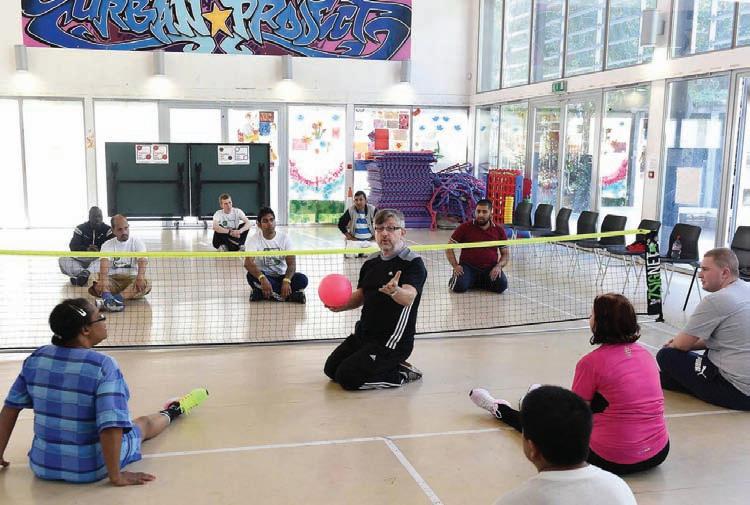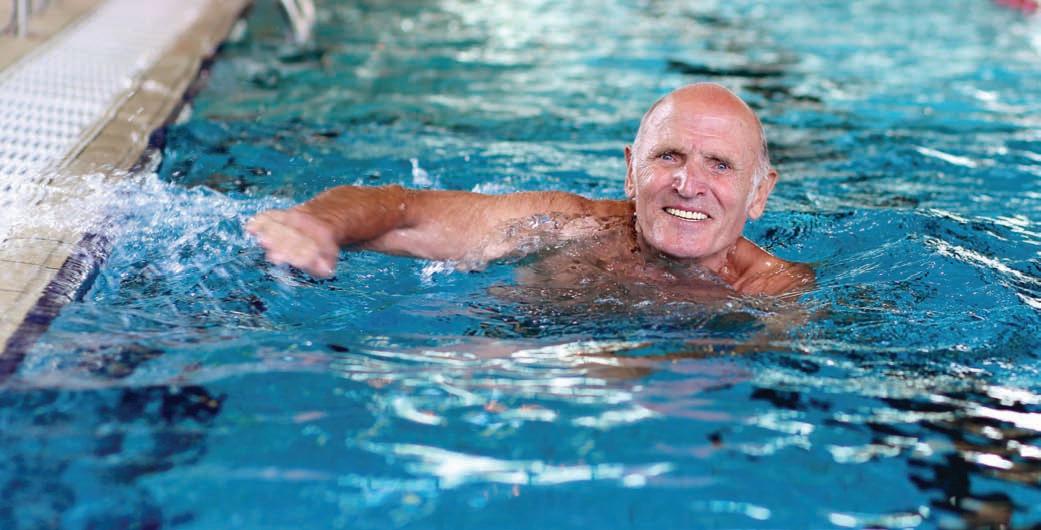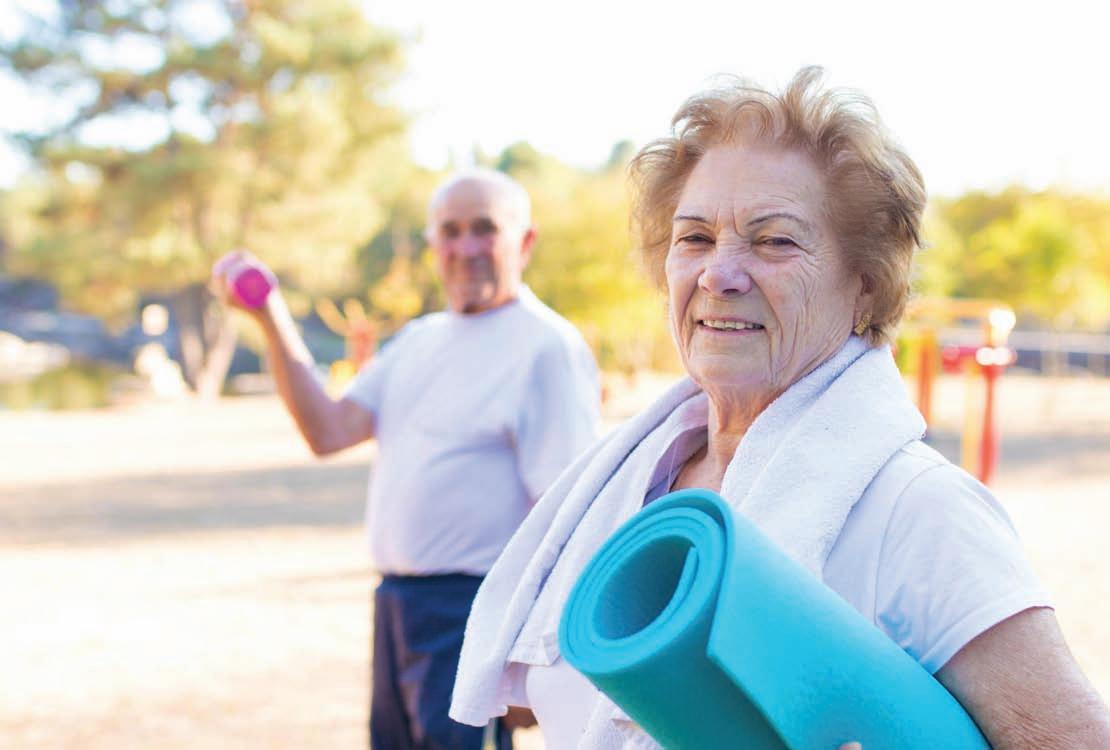
7 minute read
Insight
Wearable fitness aids, such as Fitbits, were among the 10 most popular corporate rewards across the UK David Gould, CeO , CR Worldwide
Going corporate
New Corporate Wellness 2.0 report reveals that wellness perks and wearable fitness gadgets are among the most popular rewards with workers

■■Large enterprises across the world are transforming their workplace benefits
Rising workplace stress among employees has led companies to increasing their investment in incentives as rewards – with wearable fitness gadgets among the most popular perks.
The finding comes from a new report by CR Worldwide called Corporate Wellness 2.0. The report is based on data from 120 enterprises and more than 287,000 employees. It shows that overall, corporate spending on rewards and incentives is rising year-on-year, with the Asia Pacific region doubling its investment in rewards programmes. uK enterprises have doubled their average spend on employee rewards over the past three years, while us companies are now spending an average of us$292,000 on employee rewards in 2019.
■■Gadgets such as Fitbits are among the most popular rewards chosen by employees

Gadgets such as fitness trackers, wearable tech and tablets are among the most popular rewards chosen by employees.
"Individuals are choosing corporate rewards that similarly demonstrate an increased awareness of mental health and wellbeing – such as extra leisure time or health-related gadgets," the report says.
"Wearable fitness aids, such as Fitbits, were among the 10 most popular corporate rewards across eMeA (including the uK) and the us in 2019." According to David Gould, CeO of CR
Worldwide, the increase in companies investing in rewards is a result of an evolving employment landscape.
"Large enterprises across the world are transforming their workplace benefits and brands in response to major changes in workforce demographics that are aff ecting recruitment, retention and productivity," he said. "Rising stress, ill-health and skills shortages among a new generation of workers are stunting productivity, growth, wages and living standards. "Younger workers are also more likely than previous generations to prioritise prospective employers’ values and their individual ability to make an impact over salary and status. This is causing big brands to lose out to start-ups in the talent race.
"Young workers are less financially oriented. CR data reveals this is mirrored in a ‘transformation in workplace’ culture, with companies creating millennialfriendly brands promoted through workplace wellbeing initiatives. "Also, individuals are choosing more corporate rewards that benefit their personal wellbeing." l

Barry Horne, CeO, Activity Alliance
Equal opportunities

A new study has revealed that four in five disabled people want to be more physically active – but feel that their needs aren't catered for
Four in fi ve (81 per cent) disabled people want to be more physically active – but are unable to, as the demand for their needs is not being met by operators. The fi gure comes from the latest Annual Disability and Activity Survey, published by the Activity Alliance, which off ers an in-depth comparison of disabled and non-disabled adults’ experiences of sport and activity. Less than half (40 per cent) of disabled people feel they are given the opportunities they need to be active, compared to 71 per cent of non-disabled people. Meanwhile, less than a third of disabled people (32 per cent) agree that organised sport is for someone like them – compared to 63 per cent of non-disabled thinking the same.
The revelations come after figures from sport england revealed that disabled people are twice as likely to be

■■The report's recommendations include a call for the sports sector to challenge perceptions through inclusive and accessible communications
leisureopportunities.co.uk inactive as those without impairments. To tackle the issues, the report makes three recommendations for sport, health and other sectors to work towards. These are to address the wider determinants of inactivity, to design and lead a choice of accessible activities and to challenge perceptions through inclusive and accessible communications. "For the first time, we are able to compare perceptions and experiences of disabled people to non-disabled people," said Barry Horne, CeO for Activity Alliance.
"This is a first new step in gathering a snapshot of real life for a huge number of people in our population. "We want to achieve fairness for disabled people in sport and activity, a position where disabled people are as active as non-disabled people. The findings provide robust insight to
■■Less than a third of disabled people (32 per cent) agree that organised sport is for someone like them

Activity Alliance and our partners. This report will be key to helping us – as well as others – to begin changing the reality of disability, inclusion and sport.” Tim Hollingsworth, CeO of sport england, added: "At sport england we are all too aware that there’s an unacceptably high gap in activity levels between disabled and non-disabled people, and that despite a desire to be more active, many disabled people are missing out on the range of benefits that can be gained through physical activity.
"Activity Alliance’s first Annual survey increases our insight into this issue and throws down a challenge to all in the physical activity sector: to use this new understanding to make sure that far more disabled people can get physically active in a way that is right for them. "It’s a challenge that personally I know we must take up.” l
■■ Less than half of disabled people feel they are given the opportunities they need to be active

■■The research suggest that exercise prescriptions could be off ered to people at risk of Alzheimer's in order to protect their brains


Keeping the brain fi t
Aerobic exercise has been linked to enhanced brain function among those at risk of Alzheimer’s
Taking part in regular aerobic exercise could decrease the likelihood of developing Alzheimer's disease in adults who are at higher risk of generating the illness. A study by a team at the Wisconsin Alzheimer’s Disease Research Center (ADRC), university of Wisconsin school of Medicine and Public Health, looked at the eff ects of exercise over a period of six months on individuals at risk for Alzheimer's due family history or genetic predisposition.
The study investigated cognitively normal, older adults with a family history or genetic risk for Alzheimer's. All patients had a sedentary lifestyle and underwent a number of assessments, including cardiorespiratory fitness testing, measurement of daily physical activity, brain glucose metabolism

Behaviour, in this case regular aerobic exercise, can enhance brain function
Ozioma C. Okonkwo, lead investigator, ADRC imaging (a measure of neuronal health) and cognitive function tests. Half of the participants were given information about maintaining an active lifestyle – but did not take part in organised exercise sessions.
The other half participated in a moderate-intensity treadmill training programme with a personal trainer, three times per week for 26 weeks. Compared to the participants maintaining their usual level of physical activity, individuals assigned to the active training programme improved their cardiorespiratory fitness, spent less time sedentary after the training programme ended, and performed better on cognitive tests of executive functioning (but not episodic memory). The participants’ improved cardiorespiratory fitness was associated with increased brain glucose
■■The participants’ improved cardiorespiratory fitness was associated with increased brain glucose metabolism


The research shows that lifestyle behaviour can potentially enhance brain and cognitive functions
metabolism in the posterior cingulate cortex, an area linked to Alzheimer's. According to Ozioma C. Okonkwo, lead investigator at ADRC, the results could see exercise being incorporated into care plans against Alzheimer's.
"This study is a significant step toward developing an exercise prescription that protects the brain against Alzheimer's, even among people who were previously sedentary,” Okonkwo said. "The research shows that lifestyle behaviour – in this case regular aerobic exercise – can potentially enhance brain and cognitive functions that are particularly sensitive to the disease. The findings are especially relevant to individuals who are at a higher risk due to family history or genetic predisposition." The results of the study are published in a special issue of Brain Plasticity devoted to exercise and cognition. l

■■Those taking part in moderate-intensity treadmill training with a personal trainer performed better on cognitive tests of executive functioning










